12 years since being founded in 2009, Grammarly has more than 30 Million daily active users, over 10 Million downloads of its chrome extension, and 50,000+ professional and enterprise clients. And all this for a company that did not raise its first round of funding worth $110 Million until its eighth year of operation.
Now, I’m not by any means trying to imply that Grammarly was bootstrapped for the initial 8 years of the startup’s journey — the founders did make some money from selling their first startup (nobody knows how much but more on that later), which was used to self-fund the company in the beginning.
But regardless of that, Grammarly’s growth has been phenomenal — filled with some now obvious but then forward-thinking & counterintuitive lessons. In this blog, we will run you through almost everything there is to know about Grammarly from a business perspective — the founding and growth story, business model pivots, and its current business model.
Grammarly’s Founding & Growth Story
Even though Grammarly started in 2009, its story kind of began in 2004 when Alex Shevchenko & Max Lytvyn launched a plagiarism checker called MyDropbox. The product was supposed to solve a problem the two had observed during their university days.
Many of their peers would download essays from the internet but the teachers didn’t even know this was possible and were unaware of what their students were doing. But one can’t blame the teachers for not knowing because this way back in 2000, the early days of the internet in Ukraine.
By the time MyDropbox was launched in 2004, the plagiarism problem had become evident to the universities, many of which were willing to pay for a plagiarism checking service.
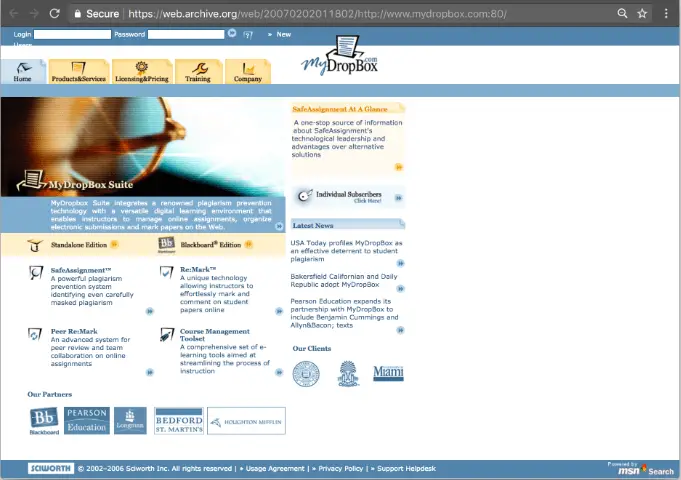
By 2007, 800 universities and roughly 2 million students were using MyDropbox.
In the same year, Blackboard, the world’s leading education platform at the time, acquired MyDropbox for an undisclosed amount, which according to the founders, was minimal. However, the deal had a clause that mandatorily required one of the founders to work with Blackboard for two years & prohibited the other from engaging in a similar business during that time.
A few days after the two-year clause ended, the founders got together once again to develop Grammarly. This time though, they avoided the mistake they made in their last venture. While MyDropbox undoubtedly had utility, it solved the problem of a narrow, academic use case, with limited upside.
With Grammarly, the idea was to help everyone write and communicate better — not only making the total addressable market size bigger but also diverse. Engineers, lawyers, consultants, salespeople, journalists, or pretty much any knowledge worker using digital communication would benefit from having a second eye check their writing.
But despite the grand vision, the resources at hand were limited. So, in the early days, the founders focussed on two things: leveraging their existing connections with universities to sell Grammarly & using customer feedback and revenue to improve the product.
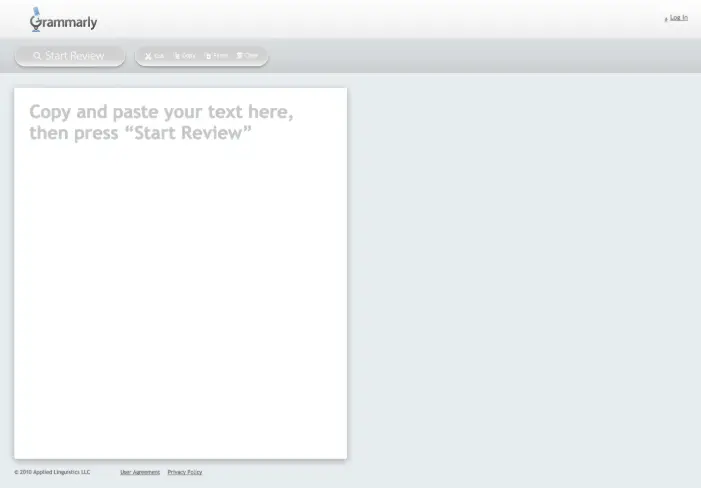
All this while, they had plans to expand beyond educational institutions, to a wider audience, later. But was Grammarly any different than other existing solutions at the time? Yes, it was. While most products, including Microsoft Word, only scanned for obvious grammar and spelling mistakes, Grammarly even handled contextual spelling and style.
By 2012, Grammarly had signed up hundreds of universities and 300,000 students as customers. In the same year, the company reportedly made $10 Million, which is remarkable considering they were still only three years into the journey and serving a small niche among the billions of English writers around the world.
At around the same time, Grammarly noticed a big uptick in customer segments beyond universities and students, pushing them to overhaul their marketing and product strategy. Initially, Grammarly’s social media strategy was to create content that appealed to grammar nerds but they also began to create content that would engage digital professionals — like resume writing tips and email writing advice.
The product landing page was overhauled to position the company as the most accurate grammar checker & the social proof snippet changed from “Trusted by 300,000 students” to “Trusted by 300,000+ people.
In 2014, Grammarly took its first steps toward reducing customer friction by launching MS office plugins and accelerating product adoption. At the time, here’s what Max Lytvyn, co-founder of Grammarly, said, “Rather than bringing users to Grammarly, we want to bring Grammarly to everywhere people write. We’re moving toward a place where our product would sit between the storage of an organization’s documents and be automatically checking documents as people write them.”
Unlike most SaaS companies, Grammarly did not take the freemium route early on. Instead, Grammarly chose slow, thoughtful, backward monetization. In the beginning, they charged universities for the service & used the revenue to improve the product. Even when they expanded beyond academia, new users had to pay $11.99 to use the service.
Come 2015, Grammarly was well-positioned to bear the financial costs of offering a freemium product. The launch of Grammarly Chrome and Safari extensions strengthened the freemium offering, even more, expediting customer acquisition.
Like any other freemium offering, the purpose was to get people habituated to the product and nudge them to purchase the paid plan. To accomplish their goal, they restricted access to features like style recommendations and advanced grammar checks, while at the same time, making sure users were reminded of what they were missing out, on every time they wrote anything using Grammarly.
Two years after the launch of the free Chrome extension, more than 8 million users were actively using it. In 2017, Grammarly’s website was revamped to get new users to install the extension right off the bat.
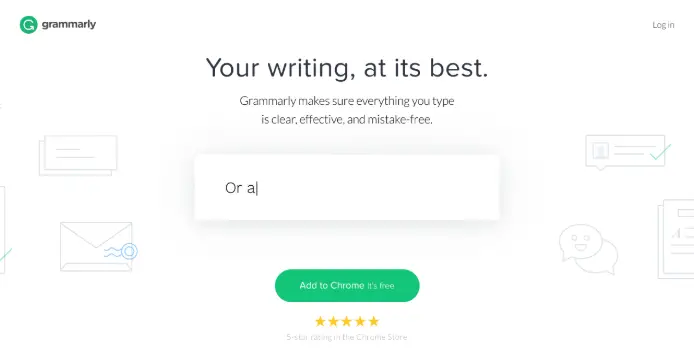
Over the years, Grammarly consistently focussed on reducing customer friction.
At the time of writing, Grammarly can be accessed almost everywhere people write — Microsoft Office apps like Word & Outlook, G-Suite apps like Gmail & Google Docs, Facebook, WordPress, Linkedin & almost any other product people use.
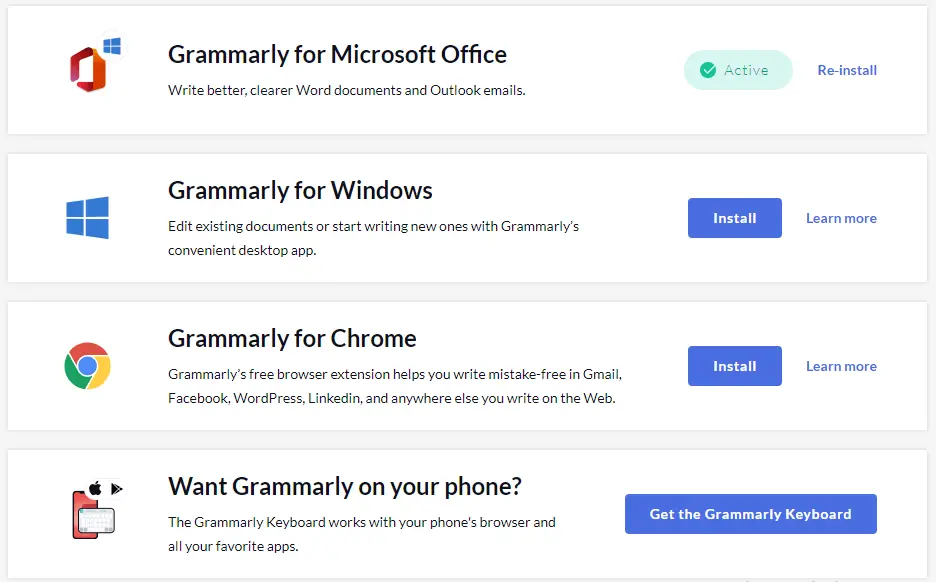
You can even download the Grammarly Keyboard Mobile App on both Android & iOS, which is compatible with a host of different apps.
2019 was an eventful year for Grammarly. The service grew to have 20 Million daily active users & joined the coveted club of startup unicorns when it raised a second round worth $90 Million at a valuation of more than $1 billion.
Two years later, Grammarly raised $200 million more, at an astounding valuation of $13 billion.
As of 2022, Grammarly has more than 30 million daily active users & 800 plus employees.
Grammarly Business Model
Grammarly makes money using a freemium model to sell premium writing subscriptions to three different customer segments: individual users, businesses, and educational institutions. Apart from selling premium writing subscriptions, the company also generates some revenue by selling its human proofreading service.
Let’s have a look at each of the revenue sources individually to develop a better understanding of them.
Grammarly For Individuals
At the time of writing, the free Grammarly service only checks critical grammar, spelling & punctuation mistakes, gives conciseness suggestions, and detects tone.
With the paid subscription, users get access to several premium features like full-sentence rewrites, word choice, tone suggestions & citations on top of the free features.
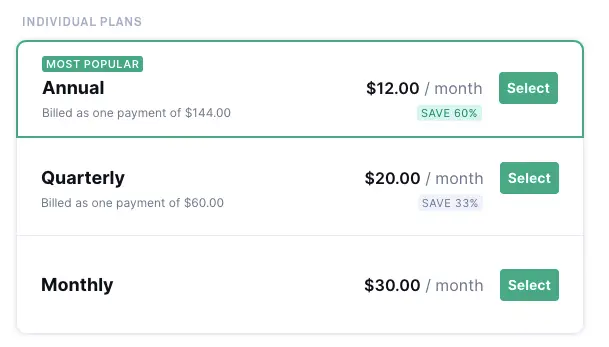
Grammarly sells the premium plan for $12 per month (when billed annually), $20 per month ( when billed quarterly ) & $30 per month ( when billed monthly ).
No prizes for guessing which plan Grammarly wants you to buy.
Grammarly For Businesses
A customized solution for companies that need to maintain brand voice and tone in all their communication, the business plan enables them to create a style guide and ensure that every team member follows it. The business plan, obviously, includes all the features of the premium plan.
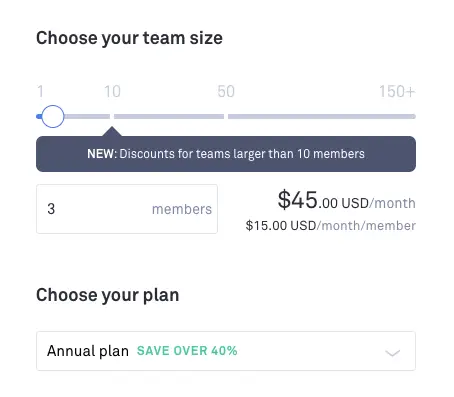
The style guide integrates with marketing platforms like WordPress, Facebook, Twitter, and Medium; Sales tools like LinkedIn & Salesforce; and support tools like Zendesk, Freshdesk, Zoho Desk, etc.
For businesses having a team size of up to 149 members, the business plan starts at:
1. $12.50/member/month ( billed as one annual payment )
2. $25/member/month ( billed as monthly payments )
Again, no prizes for guessing which plan Grammarly wants businesses to buy.
For teams larger than 149 members, prices are not publicly disclosed. Interested companies need to contact the Grammarly team.
Grammarly For Education
Targeted at schools, colleges, and universities, the education plan gives access to a preset number of people from the institution. Grammarly also sells institution-wide access. More than 3000+ institutions are using the service at the time of writing.
Human Proofreading Service
Grammarly’s AI may be the best in their line of business, but the company also offers a proofreading service for those who want to run their writing through a pair of human eyes.
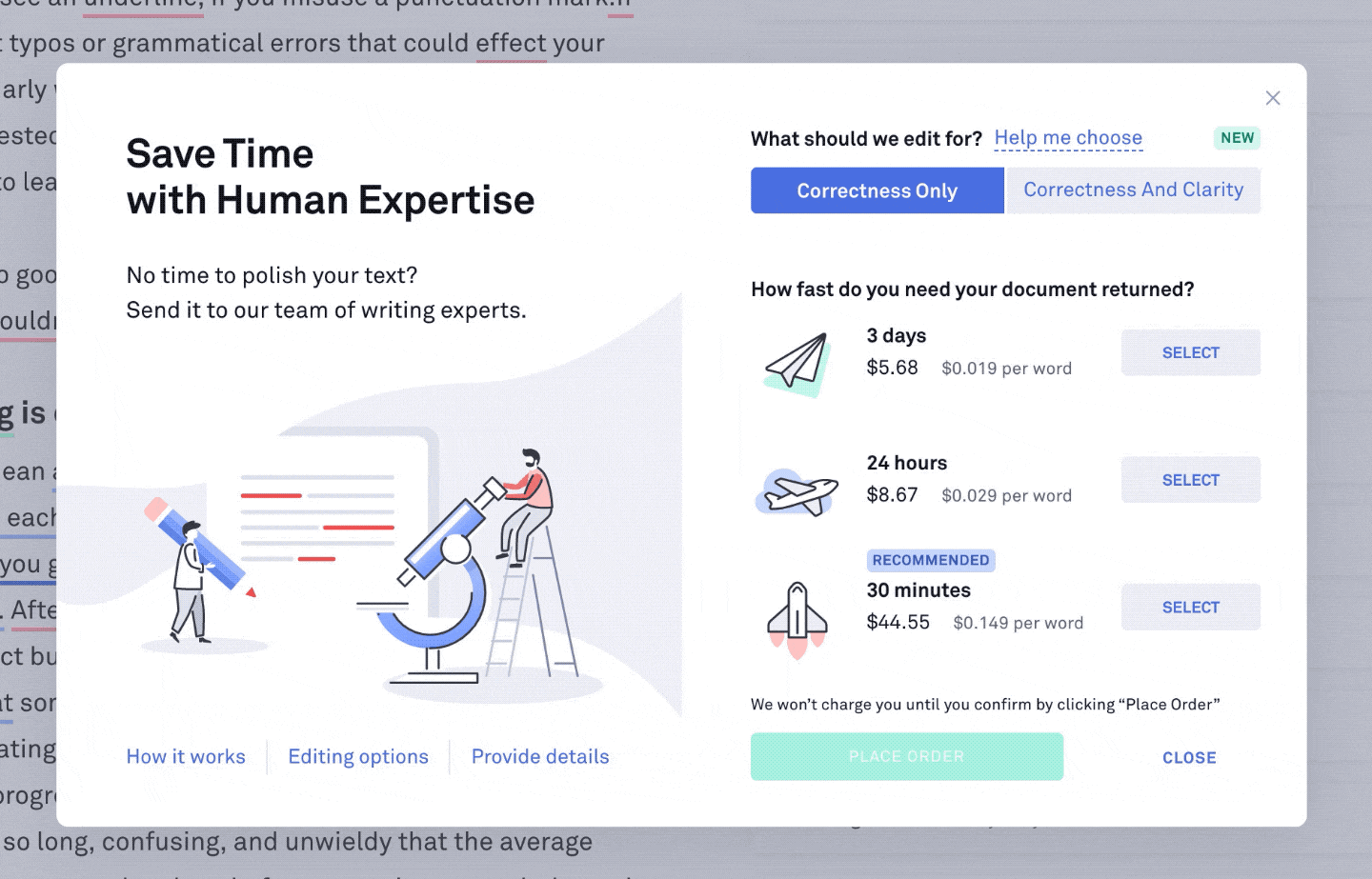
Service pricing depends on the number of words & expected turnaround time.
Grammarly Revenue & Valuation
Since Grammarly is a venture-backed private company, it isn’t obliged to share company financials publicly, and it chooses not to.
But according to a company information aggregator called getlatka, Grammarly’s expected revenue run rate is $88.7 million for 2022.
In total, Grammarly has raised $400 million over 3 funding rounds. It raised $110 million in 2017, $90 million in 2019 & $200 million in 2021. The company was last valued at $13 billion. Based on the recent funding pattern, we’re guessing that Grammarly is probably burning some cash to grow fast & isn’t worrying about profitability at the moment.
Does Grammarly Sell User Data?
Like any other freemium service, Grammarly users are subject to cookies and other things, but the company has confirmed that it does not sell user data for money.
In an interview with Techcrunch, a company spokesperson said,
“We don’t sell or rent user data to third parties for any reason, including for them to deliver their ads. Period. Our business model is a freemium model, in which we offer a free version of our product as well as Grammarly Premium and Grammarly Business, which are paid upgrades.”
To be honest, Grammarly’s AI proofread this article, and it corrected us more than a dozen times.
Thank you for taking the time to read the entire article. If you liked it, you might also like our article on WhatsApp’s Business Model.

